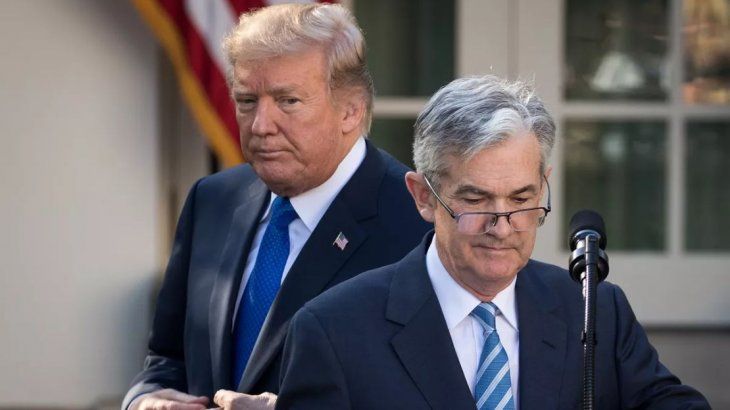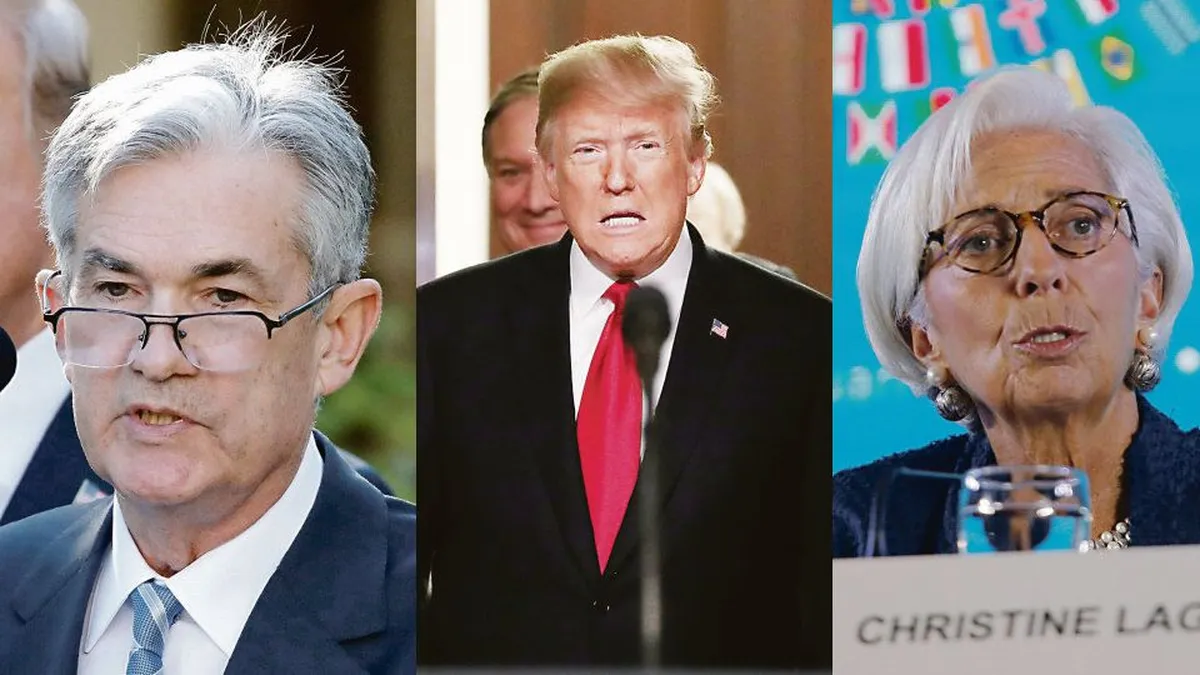What Trump ruined, is not corrected with low rates but of tariffs, his responsibility. If the Fed drives badly, it can also ruin its credibility.
Christine Lagarde triggered the seventh reduction of European interest rates on Thursday. It was a decrease in a quarter point that left them at 2.25%. And expectations suggest another similar resolution in June. For President Trump, stuck in the labyrinth of his trade war, it was the drop that overflowed patience. The White House needs a rule. And the Fed, unlike the ECB, is disregarded and does not provide the aid you want. “Jerome Powell, who always operates ‘too late and bad’, he should have lowered the rates for a long time,” Trump complained, thus, in capital letters, on social networks. And, he added, “certainly, ‘Too late’ Powell must download them now.” The auction of the message was lapidary: “Powell’s dismissal can’t get quick enough.”
The content you want to access is exclusive to subscribers.
Trump, an early decision maker that makes important mistakes, as seen in the tariff saga, will have to wait before perpetrating the next one. The Fed Chief does not plan to get away before his mandate, in April 2026. And the pressure will resist. He already did it in the first period of the Republican (which was the one who appointed him to succeed Janet Yellen). The law grants stability in office and enshrines the independence of the Central Bank. However, the president, as Kevin Hasters of the National Economic Council pointed out, is exploring alternatives. A recent ruling of the Supreme Court – even subject to appeal – authorized it on Wednesday to fire the directors of two independent public agencies. The sentence feeds its renewed ambition (and the crudeness of the direct message to Powell). Let’s be clear: Trump is convinced that this time he will get rid of Chairman.


From Richard Nixon and Paul Volcker: a long -standing classic
The governments with Fed is a long -standing classic. Richard Nixon versus Paul Volcker He established a milestone in the late 1970s, still in force. “We will accept inflation if necessary, but we cannot accept unemployment,” the court marked President Nixon to Arthur Burns, head of the Fed, while inflation was spoiled. Burns gave to the executive’s will, and retained the low rates for others. The discovery of stagflation – which combines the worst of the two worlds – was the disastrous result of experience. Volcker, who happened it, broke down with the White House. He imposed his orthodox criteria to rajatabla. And not only defeated two -digit inflation that seemed indomitable. He also demonstrated the relevance of an independent central bank of political power as a promoter, and guarantor, of stability.
Trump and Powell.jpg

From Trump’s first presidency the questions come to Powell.
The story is not repeated, but rhyme. In 1971, Nixon exploded the original Bretton Woods regime. Currently, Trump makes the international economic order created after. Its onslaught against free trade – and the rules of the multilateral system – constitutes a formidable stapling shock. Although no one should be confused: the starting conditions – full employment and inflation converging to 2% – are diametrically opposite. But Trump seeks the same thing that Nixon demanded. That relaxes the countertop rates of the impulse that printed economic policy. Powell, like Volcker, doesn’t want to burn like Burns. And it is not slow, as Trump alleges. From September to December, the Central Bank cut the rate three times, a complete point. It is just the intention of doing your job well.
A little recommended agenda ties your hands to the Fed
In Davos, in January, two days after assuming, Trump pointed out that interest rates had to go down immediately. It seemed like a remote -directed missile against the Fed and it wasn’t. The Secretary of the Treasury, Scott Besenthe explained very well. The president, unlike what was acted in his first management, He did not talk about short rates, which the Central Bank handles, but of the long -term. Its objective was a reduction in tenor types to ten years. And rightly: they climbed more than one complete point during the electoral campaign when the Fed had cut off theirs in that magnitude. And a plan was urged to achieve it. “Drill, Baby, Drill” is the planned strategy to increase energy production in the US. Trump then negotiated with the Russia of Putin and Saudi Arabia an increase in quotas of the OPEC Plus. Not only does it want to reduce energy. Deregulation was another avenue to reduce costs and inflation expectations. With those letters, the Government trusted that long rates reversed their aggressiveness. The Fed would follow its steps later, without coercion, in line with the projections of its points map. There, two sales are still consigned today before the end of the year.
Of course Trump also had other plans. None as transcendent as the rise of tariffs. And there lies the drama. It is not Powell’s slowness, it is his speed to draw. And the excess of a little recommended agenda, which ties the hands to the Fed. It is a challenging scenario, Powell acknowledged at the Chicago Economic Club. “It is very likely that unemployment will increase as the economy slows down, and it is very likely that inflation ascends as tariffs upload”he said. It is an increase in tariffs much larger than the estimated. The Smoot-Hawley law did not upload them so much, and that happened 95 years ago. There is no valid experience. “Our role is to ensure that it is a unique increase in the price level.” The priority is to prevent inflation expectations from being disagree. This prevents rates from lowering. Matters to say it: What Trump ruined, is not corrected with low rates but of tariffs, his responsibility. If the Fed drives badly, it can also ruin its credibility. From there, the decision to see and wait. And Powell was very clear. “Markets are working with difficulty in these conditions, but they are working”. He does not expect to run to his rescue. It is not just Trump that despairs. Chicago futures contemplate a first rate cut in June. And four throughout 2025. It is not what Powell has in mind.
Trump governs by instinct
Trump stuck with the commercial war. It was such an impaired that the pause mode had to freeze the application of the “reciprocal” tariffs (although it preserves a 10%universal tariff). China is the exception, but at current tribute levels, reality suspended all trade. This lodazal, said, does not drain the rates but the tariffs and the reigning uncertainty. It is the responsibility of the government to restore a commercial Pax model that is credible and allows the exchange. What could go wrong? Destroying the bag is no longer a taboo for Trump, but the president stopped when he warned the run against the treasure bonds and the dollar. He was scared and reversed. Thus, this week, he promised agreements with Japan, with the European Union and even with China. After all, the US was the envy of the world when the calm chicha of Biden was governed. In that need for Washington to recalculate, and take a break to think better, say goodbye to Powell would be to tighten the nuclear button. It has no logic, and would destroy the maltrecha faith in the dollar. But it is necessary that Trump ignores his intuition. And it was already seen that the president rules by instinct.
Source: Ambito




